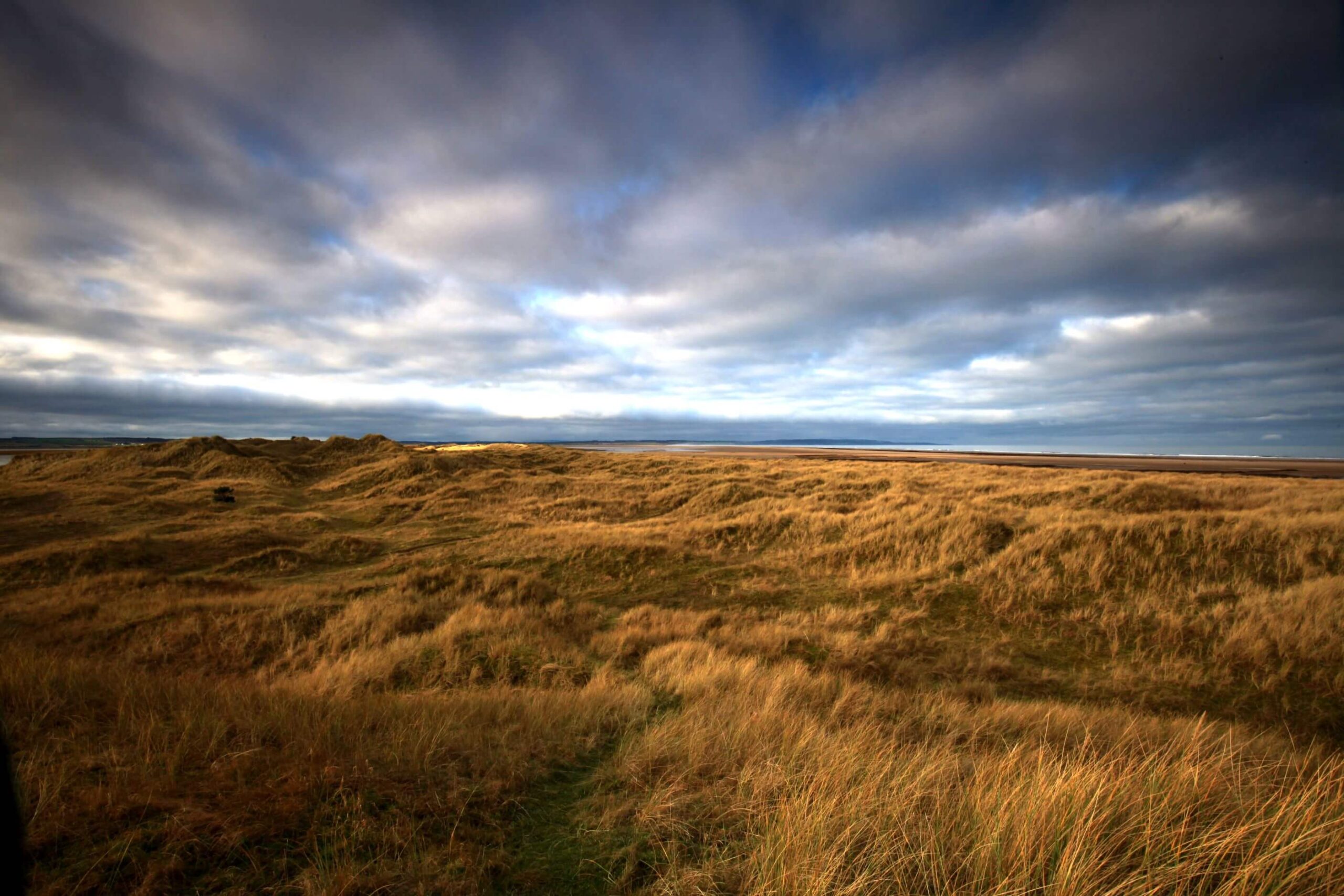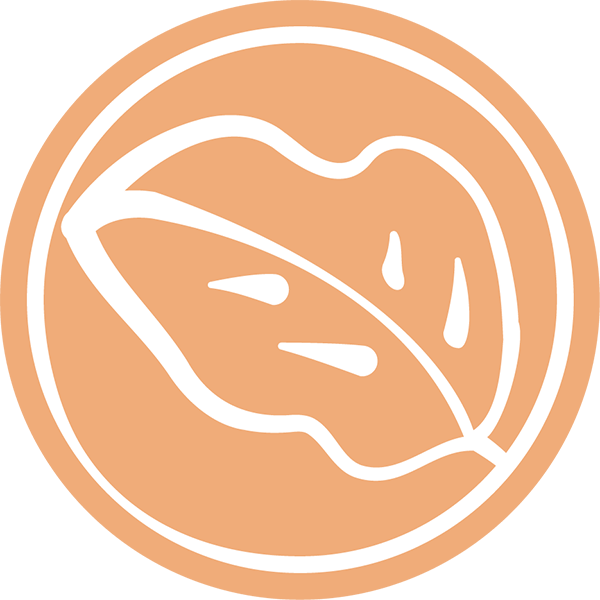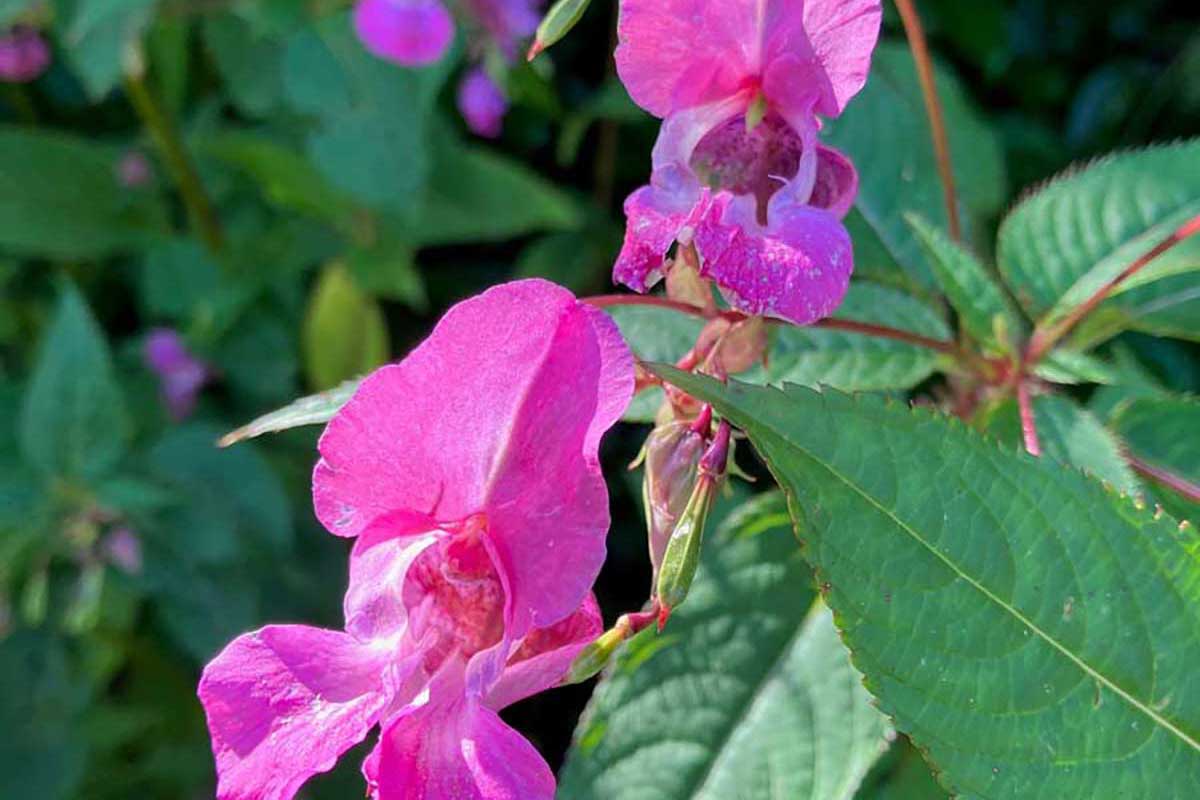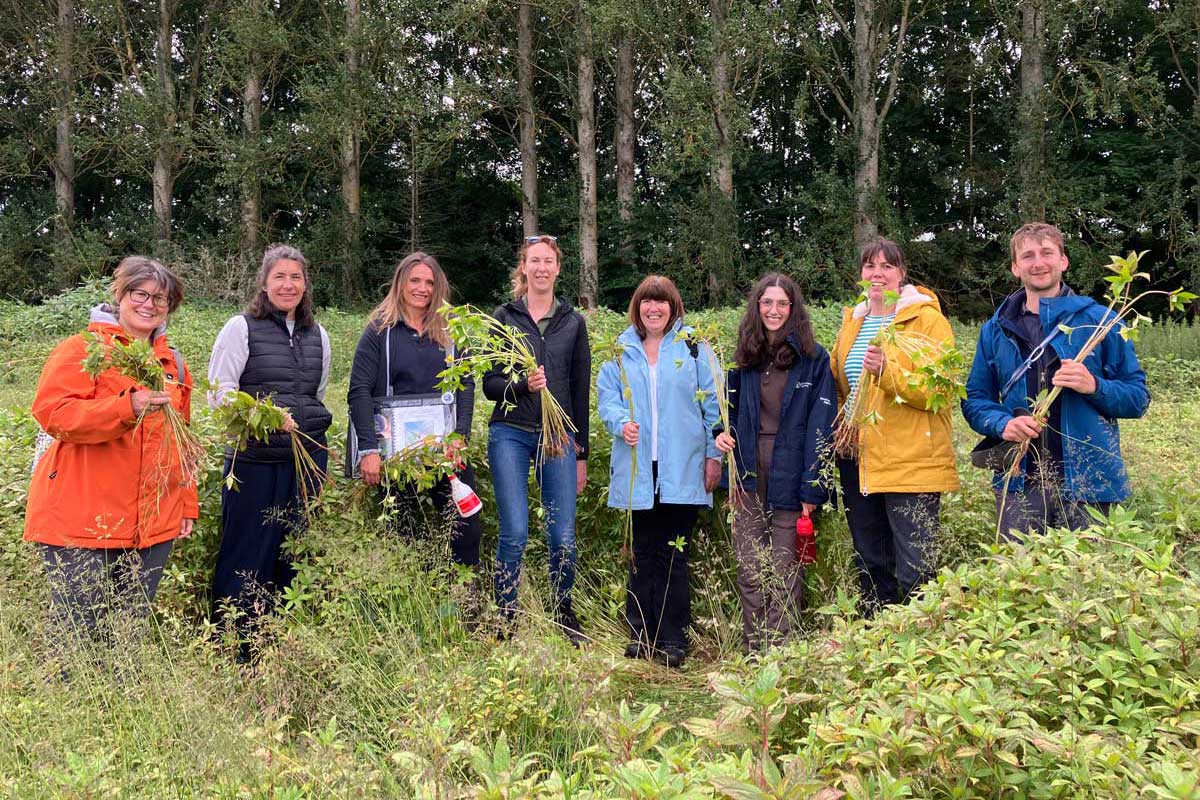
The network of sand dunes on the Northumberland coastline is of national significance (Northumberland holds 10% of the UK’s dune systems), harbouring rare native plants as well as providing important habitats for insects, reptiles and birds. The dune landscape is a dynamic system, always changing, growing and shifting. This movement is vital for it to support rich biodiversity and protect the coastline from flooding and storms.
But in many areas invasive species are consuming the dunes – interrupting their natural cycle of movement and crowding out the previously rich native flora and fauna with a stabilised monoculture. These interlopers mainly come from illegal dumping of garden waste, and occasionally escape in from local gardens. Without intervention the Northumberland dunescape could become partially engulfed, endangering many native species including toads, lizards, butterflies, tiny orchids and cranesbill, which need the shifting sand and the spacious sanctuaries of the dune slacks to survive.
We have begun a major programme of nature recovery work across the dunes at Bamburgh, Embleton Links, Buston, Alnmouth and Warkworth, targeting invasive species, including Ivy, Sea Buckthorn and Blackthorn.
This work was initially undertaken by hand with a team of volunteers led by Northumberland Coast National Landscape Conservation Team and Northumberland Wildlife Trust specifically targeting Sycamore and Snowberry (at Bamburgh), and Japanese Rose and Sycamore (at Annstead Dunes).
However, in November 2024 we began an intensive programme of mechanical removal at Bamburgh and Warkworth where many of the invasives are so entrenched that removal by hand is impossible. A variety of machines are being used, including a rotavator on pirri-pirri. It will be the first time large-scale removal has taken place in these areas but is essential to ensure the future survival of the dunes. Sand dunes are robust habitats and once the ‘bully’ species are out, the native grasses and plants will have the opportunity to recolonise the bare sand quickly.
We are working closely with the landowners, Natural England, Northumberland Coast National Landscape and the National Trust to evaluate the success of this large-scale removal, create a long-term invasive removal programme and ensure a co-ordinated approach across the coastline.
While the removal work progresses, we will continue to improve mapping resources for dune habitats to allow us to better target interventions. We will share equipment, staff, volunteers, and knowledge with partners working on the Northumberland Coast.
In addition, we will continue to remove pirri-pirri-bur from the main routes/paths.
Foreshore Fencing
Drone Surveys
In the news! WADER to bring Bamburgh Dunes back to life






